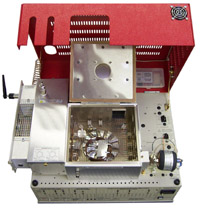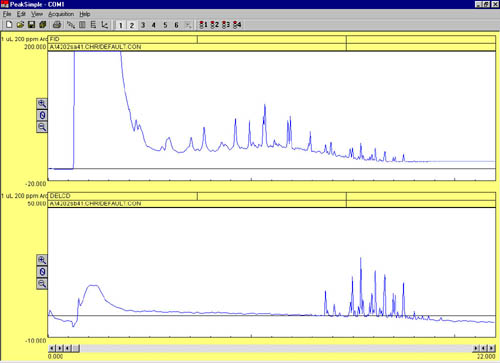 |
|
|
Our PCB GC system has everything you need to detect PCBs in soil and other solid matrices. The Thermal Desorber permits the user to inject and analyze PCBs with very high sensitivity and liitle or no sample preparation—no solvent extraction is required. Up to 1 gram of soil can be loaded into each re-usable glass desorption tube. For more information on the Thermal Desorber accessory, please see pages 60-61.
The FID detector responds to all hydrocarbons, and the DELCD indentifies which are halogenated. Due to the extreme selectivity of the DELCD, PCBs can be discriminated even in the presence of massive hydrocarbon contamination. Because the FID pre-combusts the sample, the DELCD is protected from hydrocarbon contamination.
The PCB GC system is also useful for detecting pesticides, PAHs, JP-4, kerosene, and diesel in soil. Soil samples are typically 20-50% water, so the FID flame is autmatically relit after a large water peak. The 30-meter capillary column is included to efficiently separate hydrocarbons up to C40+. The built-in, "whisper-quiet" air compressor provides an infinite supply of combustion air for the FID/DELCD detector, and if the GC is used with the H2-50 hydrogen generator, no gas cylinders are required.

These two chromatograms show the analysis of a 200ppm Aroclor 1254 sample in diesel fuel on a PCB GC.
|
8610-0080
|
PCB GC System
|
£14,080.00
|
|||
|
(VOLTAGE:
for 110VAC, use
8610-0080-1; for 220VAC, use 8610-0080-2)
|
|||||
|
Options
& Upgrades: additional detectors,
6 channel USB PeakSimple data system, Split/Splitless
and PTV injectors
|
|||||